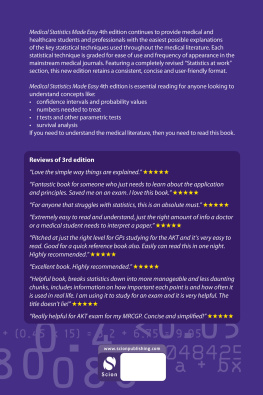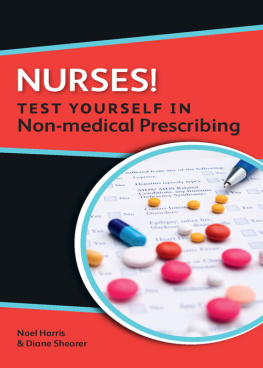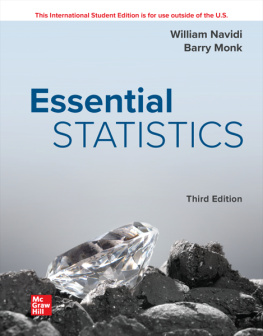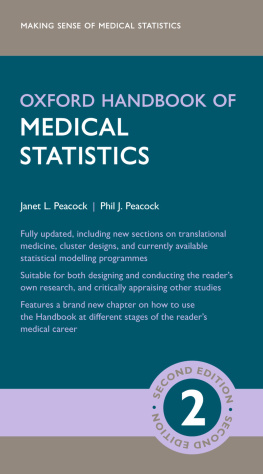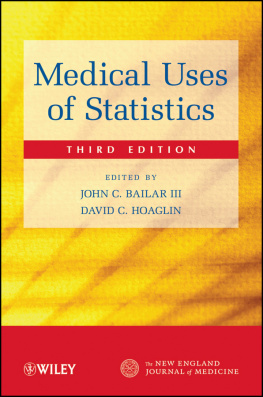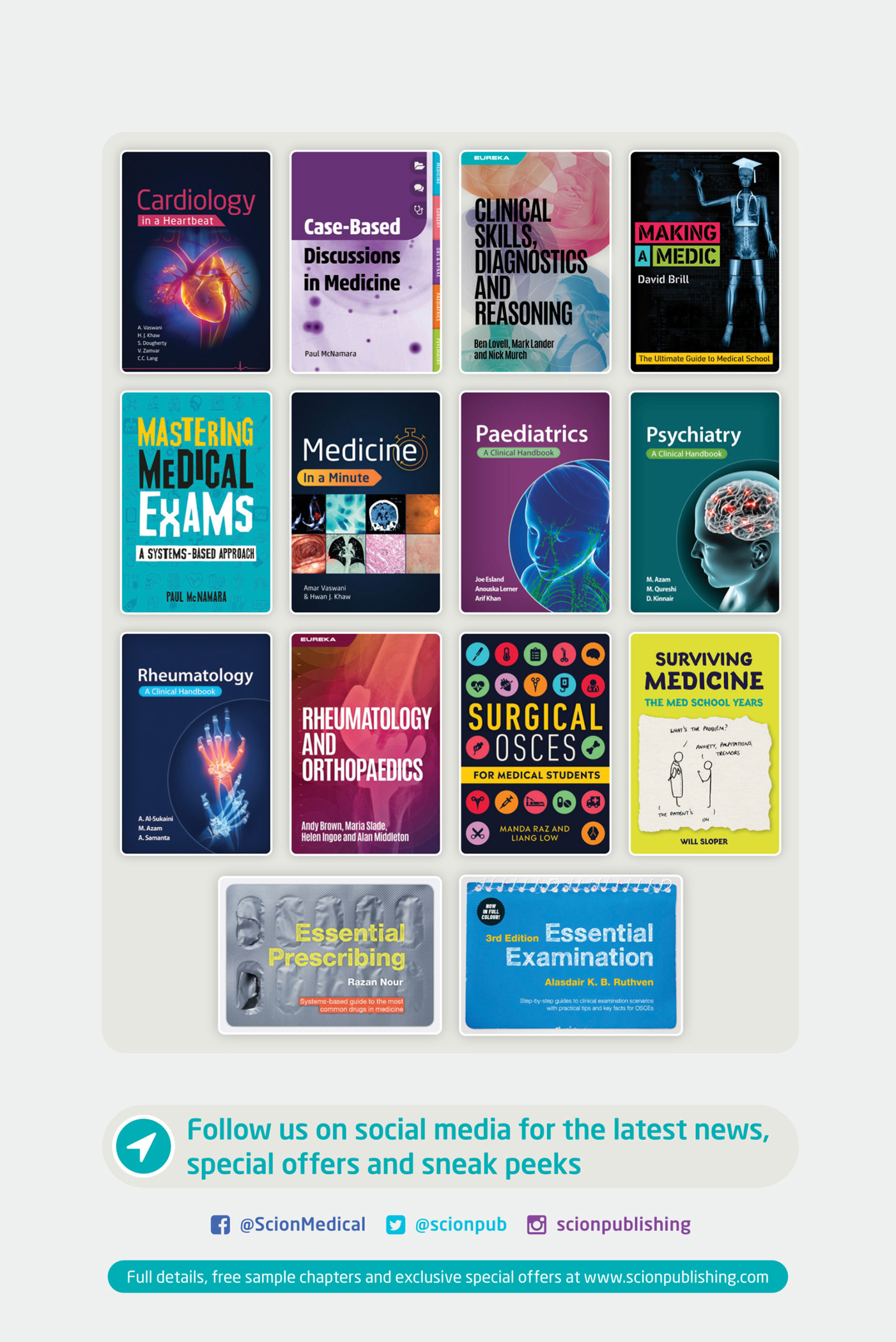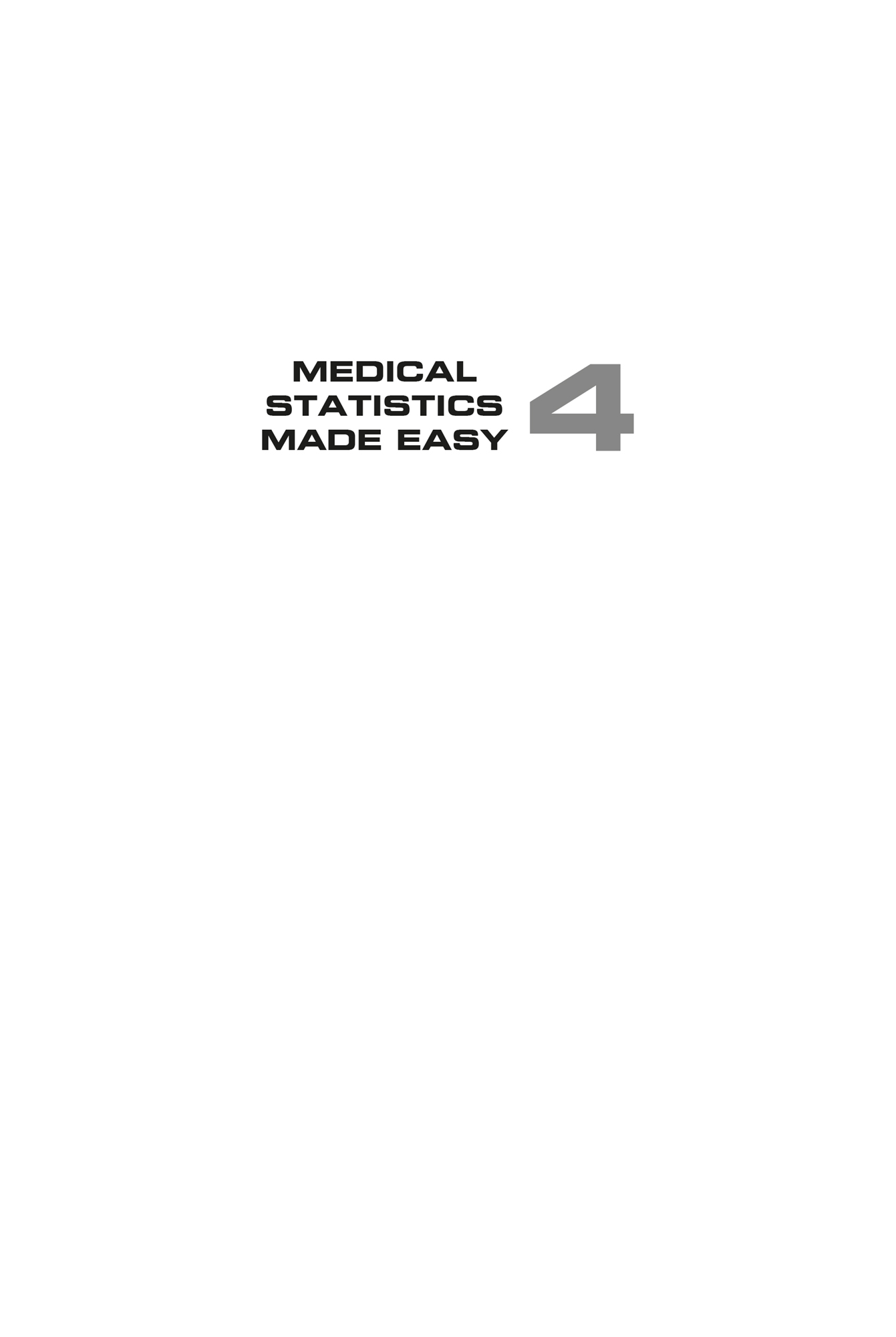Fourth edition Scion Publishing Ltd, 2021
ISBN 9781911510734
Third edition published in 2014 by Scion Publishing Ltd (978 1 907904 03 5)
Second edition published in 2008 by Scion Publishing Ltd (978 1 904842 55 2)
First edition published in 2003 by Martin Dunitz (1 85996 219 X)
Scion Publishing Limited
The Old Hayloft, Vantage Business Park, Bloxham Road, Banbury OX16 9UX, UK
www.scionpublishing.com
Important Note from the Publisher
The information contained within this book was obtained by Scion Publishing Ltd from sources believed by us to be reliable. However, while every effort has been made to ensure its accuracy, no responsibility for loss or injury whatsoever occasioned to any person acting or refraining from action as a result of information contained herein can be accepted by the authors or publishers.
Readers are reminded that medicine is a constantly evolving science and while the authors and publishers have ensured that all dosages, applications and practices are based on current indications, there may be specific practices which differ between communities. You should always follow the guidelines laid down by the manufacturers of specific products and the relevant authorities in the country in which you are practising.
Although every effort has been made to ensure that all owners of copyright material have been acknowledged in this publication, we would be pleased to acknowledge in subsequent reprints or editions any omissions brought to our attention.
Registered names, trademarks, etc. used in this book, even when not marked as such, are not to be considered unprotected by law.
Typeset by Evolution Design & Digital Ltd (Kent), UK
Printed in the UK
Last digit is the print number: 10 9 8 7 6 5 4 3 2 1
Abbreviations
| ARR | absolute risk reduction |
| BMI | body mass index |
| BP | blood pressure |
| CI | confidence interval |
| df | degrees of freedom |
| HR | hazard ratio |
| ICC | intra-class correlation coefficient |
| IQR | inter-quartile range |
| LR | likelihood ratio |
| NNH | number needed to harm |
| NNT | number needed to treat |
| NPV | negative predictive value |
| P | probability |
| PPV | positive predictive value |
| RRR | relative risk reduction |
| SD | standard deviation |
Preface
This book is designed for healthcare students and professionals who need a basic knowledge of when common statistical terms are used and what they mean.
Whether you love or hate statistics, you need to have some understanding of the subject if you want to understand or critically appraise a research paper. To do this, you do not need to know how to do a statistical analysis. What you do need is to know why the test has been used and how to interpret the resulting figures.
This book does not assume that you have any prior statistical knowledge. However basic your mathematical or statistical knowledge, you will find that everything is clearly explained.
A few readers will find some of the sections ridiculously simplistic, others will find some bafflingly difficult. The thumbs up grading will help you pick out concepts that suit your level of understanding.
The star system is designed to help you pick out the most important concepts if you are short of time.
This book is also produced for those who may be asked about statistics in an exam. Pick out the exam tips sections if you are in a hurry.
You can test your understanding of what you have learnt by working through extracts from original papers in the Statistics at work section.
About the authors
Professor Michael Harris (MB BS FRCGP MMEd) is Honorary Senior Research Fellow at the University of Exeter Medical School, UK, and Research Associate at the University of Bern, Switzerland. As well as being a General Practitioner, his roles have included medical education and being an examiner for the MRCGP.
Professor Gordon Taylor (PhD MSc BSc (Hons)) is Professor of Medical Statistics at the University of Exeter, UK. His main role is in the teaching, support and supervision of health care professionals involved in non-commercial research.
Chapter 1
How to use this book
You can use this book in a number of ways.
If you want a statistics course
Work through from start to finish for a complete course in commonly used medical statistics.
If you are in a hurry
Choose the sections with the most stars to learn about the commonest statistical methods and terms.
You may wish to start with these 5-star sections: percentages ().
If you are daunted by statistics
If you are bewildered every time someone tries to explain a statistical method, then pick out the sections with the most thumbs up symbols to find the easiest and most basic concepts.
You may want to start with percentages ().
If you are taking an exam
EXAM
TIP!
The Exam Tips give you pointers to the topics which examiners like to ask about.
You will find these in the following sections: mean ().
Test your understanding
See how statistical methods are used in five extracts from real-life papers in the Statistics at work section ().
Work out which statistical methods have been used, why, and what the results mean. Then check your understanding in our commentaries.
Glossary
Use the Glossary as a quick reference for statistical words or phrases that you do not know.
Study advice
Go through difficult sections when you are fresh and try not to cover too much at once.
You may need to read some sections a couple of times before the meaning sinks in. You will find that the examples help you to understand the principles.
We have tried to cut down the jargon as much as possible. If there is a word that you do not understand, check it out in the Glossary.
Chapter 2
How this book is designed
Every section uses the same series of headings to help you understand the concepts.
How important is it?
We noted how often statistical terms were used in 200 quantitative papers in mainstream medical journals. All the research papers selected for this survey were published during 2019/2020 in the British Medical Journal, The Lancet, the New England Journal of Medicine, PLOS Medicine

